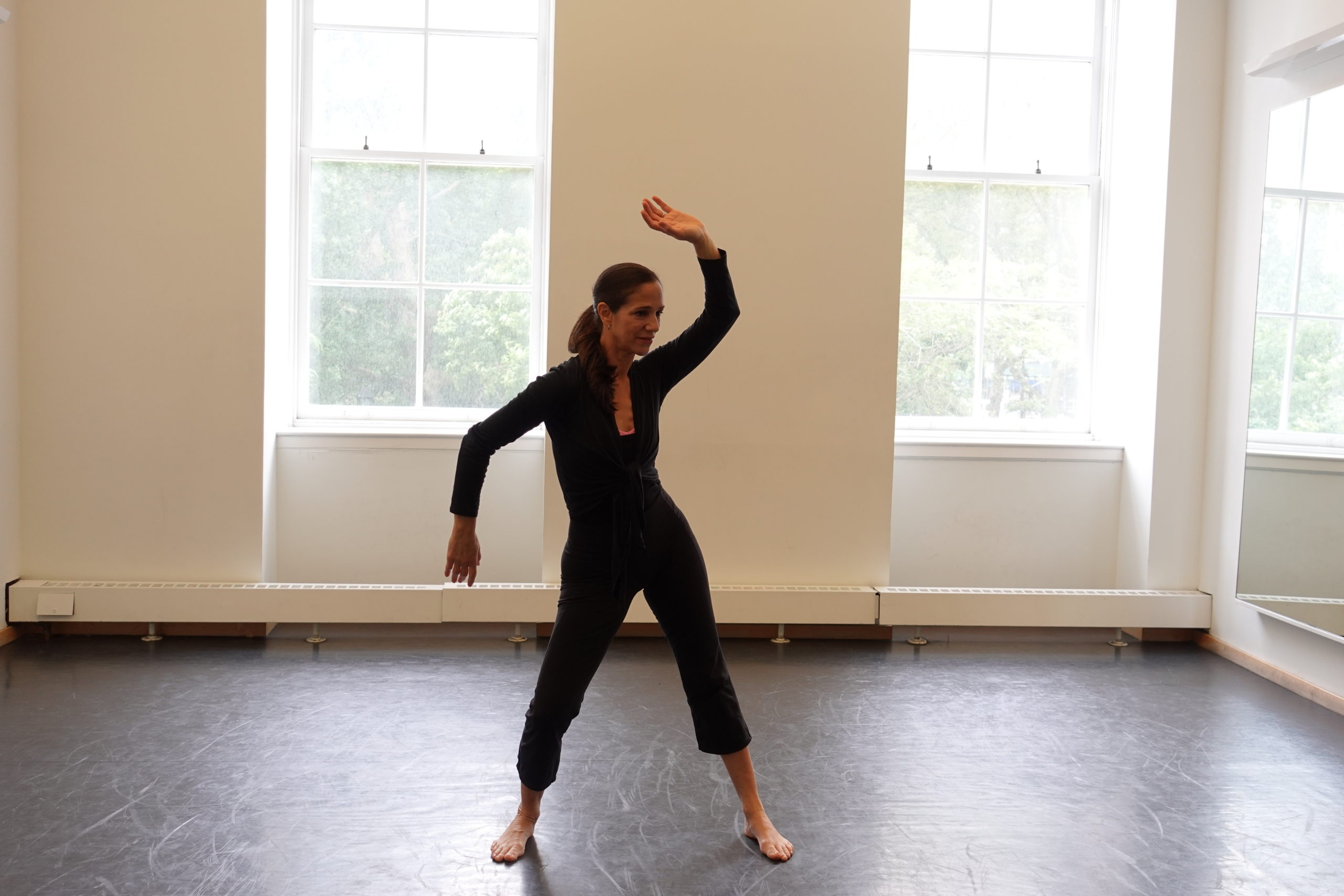
Simonson Technique, developed by master teacher Lynn Simonson, holds the philosophy that anyone can dance: “Any age, body type, cultural background, experience level—if you can move, you can be taught in a dance class,” says Teresa Perez Ceccon, a veteran Simonson instructor. “Also, no two bodies are the same. We want students to understand their own anatomy, their range of motion and limitations, and to learn to move within that.”
Anatomical awareness, alignment, understanding of the possibilities and limitations of the student’s individual body, and injury prevention are hallmarks of Simonson’s approach—but so is something Perez Ceccon says isn’t talked about as much. “Lynn started out in jazz dance. She taught to jazz music. But she also loved Afro-Caribbean music, Afro-Cuban music, and blues,” she says. “For me, that’s the way my body moves organically. Finding Lynn’s class felt like coming home.”
Perez Ceccon describes her own early dance training as “eclectic and choppy, a bit of tap, jazz, ballet, musical theater, and then, thanks to my Latina background”—she’s Puerto Rican, raised in Queens, New York—“salsa and merengue at every family party.” At around 15 years old, she studied at a dance studio in Queens with teachers who’d trained under jazz dance legends like Luigi and Phil Black. At an after-school program in high school, she was introduced to Horton-based modern and African dance. But it was Simonson Technique, brought to Queens College by dance department head Susan Matthews, that made the strongest impression. “In one semester, my body completely changed,” Perez Ceccon says. “I was learning about my anatomy. I became more flexible and open. It rocked my world.”
Perez Ceccon became certified to teach Simonson Technique in 1997. A few years later, she began to shadow and assist Simonson as she trained other instructors. In 2017, Perez Ceccon started to lead the Simonson Method of Teacher Training courses on her own; she remains the only person aside from Simonson herself to do so.
These days, Perez Ceccon teaches at Gibney and Peridance Center, as well as on Zoom and at Centenary University as an adjunct professor. In her class, students can expect to focus on concepts like musicality, rhythm, syncopation, isolation, coordination and opposition. For her DanceTeacher+ Lesson Plan, Perez Ceccon shares an eight-count phrase that includes several of these elements while also testing students’ balance. “I could teach this in a slow-intermediate class and really break it down,” she says, “but it’s not so simplistic that advanced dancers wouldn’t feel challenged.”
Step by Step
Count 1: Open and transfer weight to the left foot, sinking into the left hip; at the same time, the right hip draws back in opposition. The arms move in opposition: the elbows bend, left hand down and right hand up.
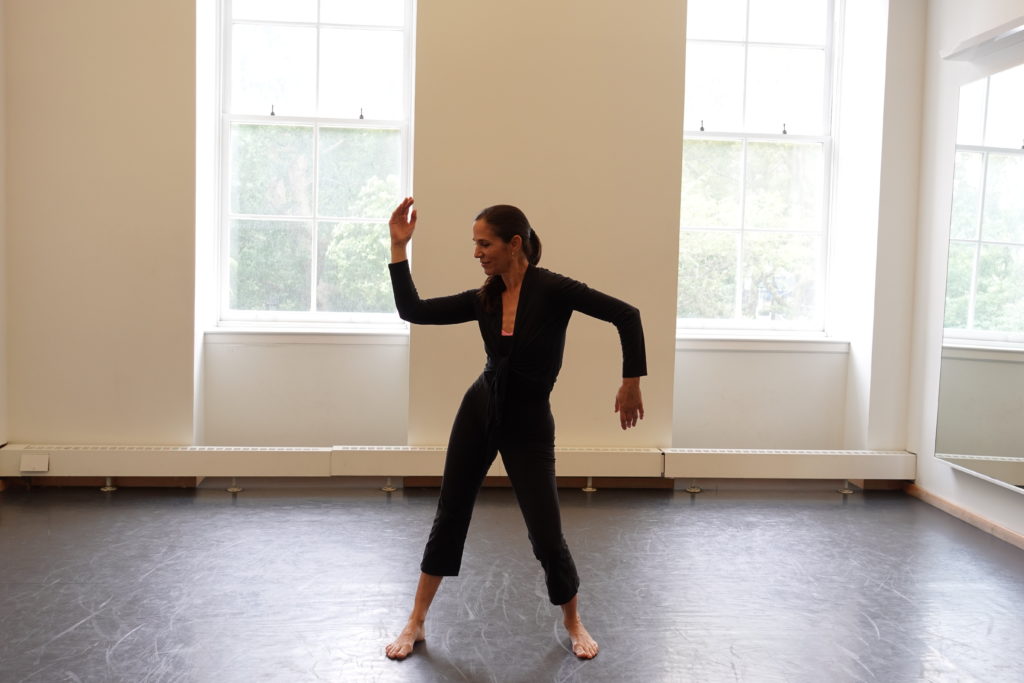
Don’t let the left foot and knee roll inward as you shift weight. Keep the whole foot on the floor.
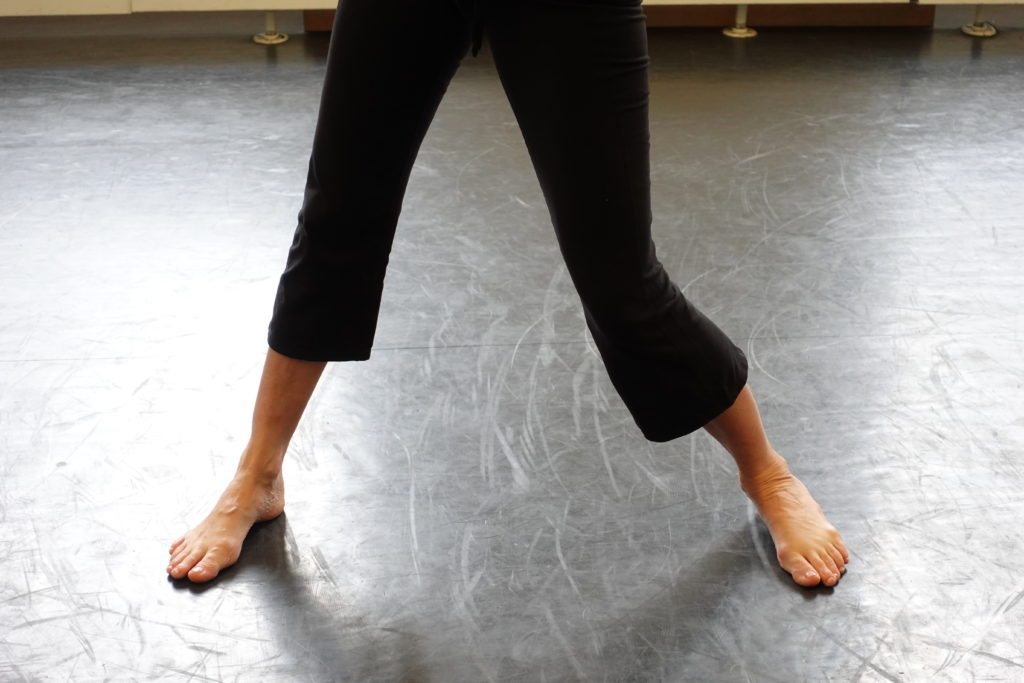
Count 2:
Transfer the weight to the right foot, sinking into the right hip; at the same time, the left hip draws back in opposition. The arms move in opposition: the elbows bend, right hand down and left hand up, but this time, face the left palm front. Avoid letting the right knee and foot roll in.

Count 3:
Touch the ball of the left foot next to the right foot and développé the right arm to the ceiling. The left arm développés down.

Don’t let the left ankle roll out to the pinkie-toe side in the demi-pointe. Keep the weight over the second toe.
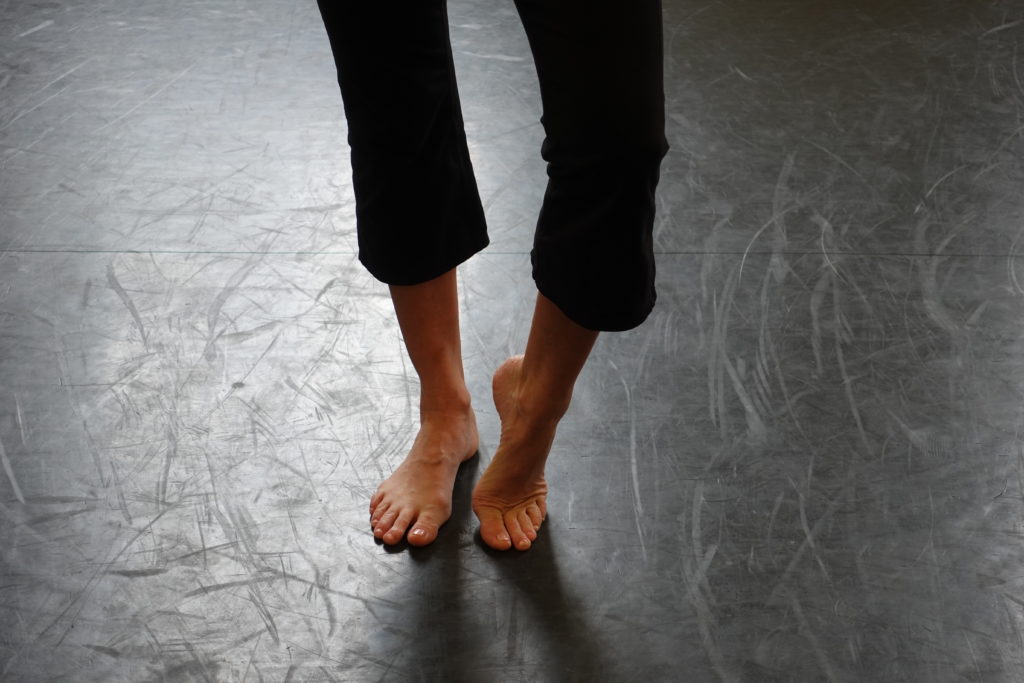
Count 4:
Step forward on the left foot and lift the right leg to parallel passé, switching the arms: développé the left arm up and the right arm down. Remember not to lean back in the passé or let the top arm fall behind the shoulders. The left arm extends high on the forward diagonal and the torso stays centered.

Count 5:
Extend the right leg with a flexed foot to the front right diagonal, rotating the body to face the leg. At the same time, contract the torso over the leg. The left arm curves overhead.
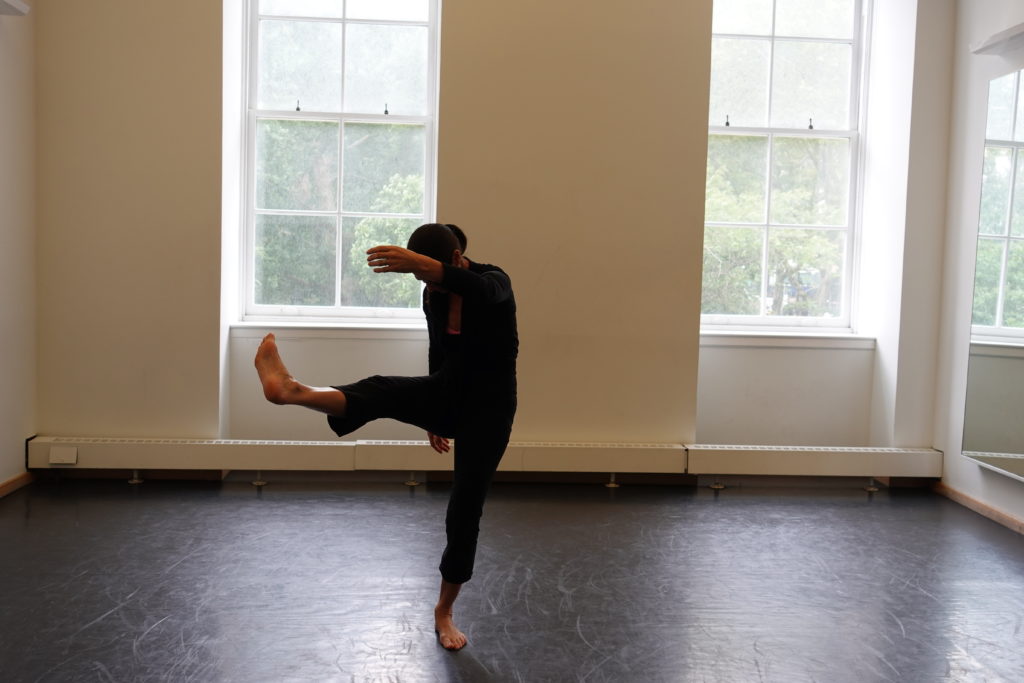
Don’t lift the shoulders in the contraction or bend too deep into plié on the standing leg.
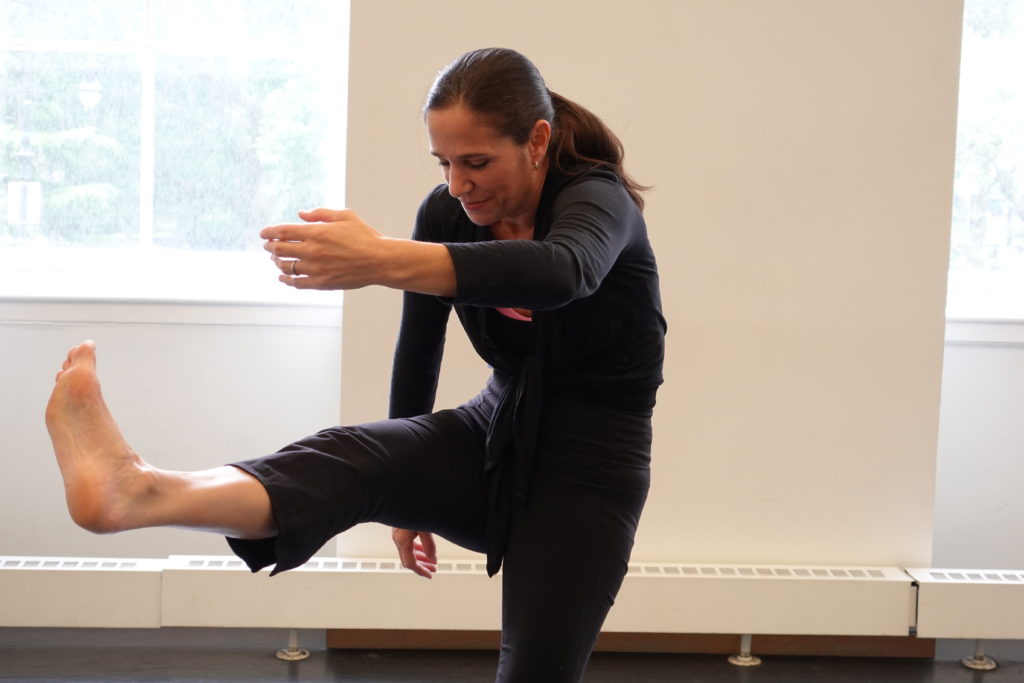
Count 6:
Bring the right leg down to a parallel fourth position with the back (left) heel lifted. Deepen the body in the forward contraction, tucking the chin in, and initiate with your left elbow to glide and bend the arm down, back and up.

Count 7 &:
Roll the left shoulder forward, up, back and down to open the left side of the body, and then immediately roll the right shoulder to open the right side of the body. Let your head follow the movement.
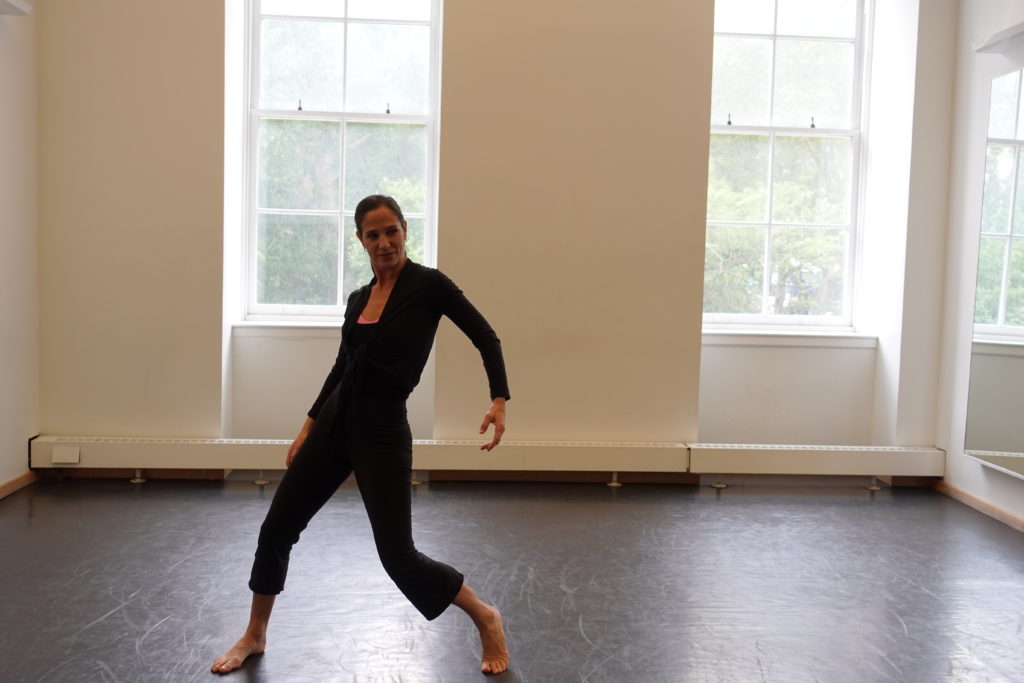

Count 8:
Throw the right arm down, forward and out to shoulder-height toward the front left diagonal and finish in a fourth-position plié with the back (right) heel lifted. Focus out beyond the right hand.

Tip: “The whole phrase, aside from the passé (count 4), should have a soft-knee, low-to-the-ground, connected-to-the-earth feeling,” says Perez Ceccon. “Stay at a low level and feel the feet on the floor.”
Watch the full video tutorial below:





